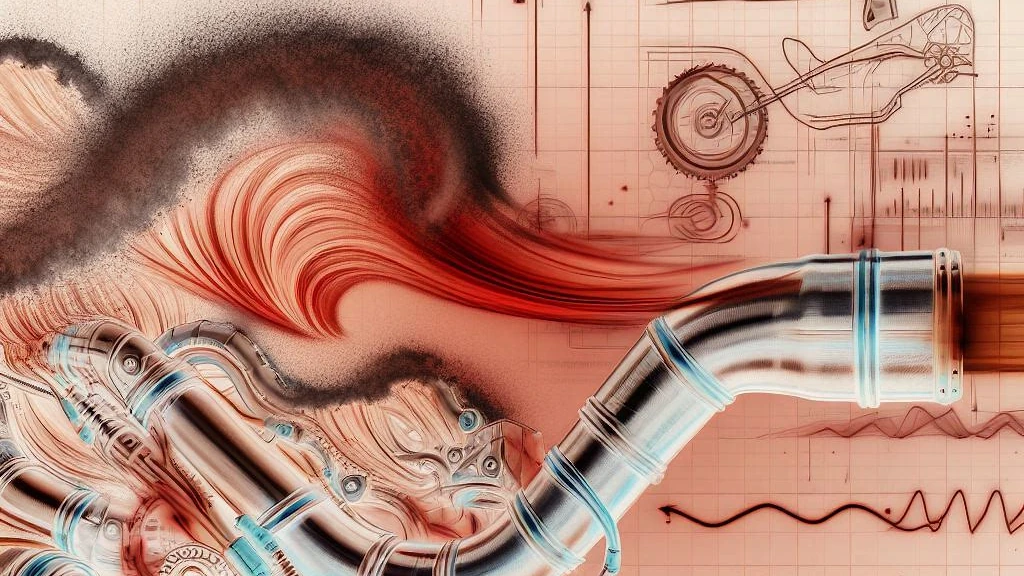Harnessing Dynamic and Wave Actions for High-Performance Exhaust Systems
The exhaust system is a critical component of any internal combustion engine, responsible for enhancing the engine's efficiency, reducing noise, and expelling exhaust gases. Whether you drive a standard vehicle or a high-performance sports car, the principles of physics and mathematical relationships governing exhaust systems remain consistent. However, performance-oriented exhaust systems differ from stock ones due to engine requirements. This article explores the dynamics of exhaust systems, from the fundamental functions to the complex interactions that optimize engine performance.
General Overview
The Primary Role of the Exhaust System
The exhaust system serves multiple purposes, including aiding in the exchange of gases, influencing engine characteristics as per the designer's intent, dampening noise, and directing exhaust gases away from the vehicle's vicinity.
Components of the Exhaust System
The exhaust system begins with the exhaust valve and usually terminates in an exhaust outlet, which can either lead to the atmosphere or, in some cases, through a collector to expel gases away from the vehicle.
Universal Laws of Physics
All exhaust systems, regardless of their engine's purpose (daily driver, sports car, or high-performance), operate based on universal physical laws and mathematical relationships. However, performance exhaust systems deviate from stock configurations due to engine design and requirements.
Dynamic and Wave Actions
Exhaust systems can work either dynamically (as in most stock vehicles) or dynamically and with wave actions (in sports and high-performance engines).
Above a certain exhaust gas flow rate, both dynamic and wave actions come into play. Correctly harnessed, they can assist in cylinder filling, particularly when tuned for engines with sufficiently wide valve overlap angles.
Dynamic Actions
How Dynamic Actions Work
As engine RPM increases, the intensity and velocity of exhaust gases expelled from the cylinder rise, driven by the swiftly moving piston.
Initially, the exhaust gases match the piston's instantaneous speed, but at higher RPM, a gas column within the exhaust pipe starts to move independently, causing the creation of an area of low pressure behind it. This partial vacuum helps draw the remaining exhaust gases from the cylinder, while, during the intake valve opening, fresh air is drawn in, enhancing cylinder filling and increasing torque.
Identifying Dynamic Action
You can notice the effect of dynamic actions when driving. For instance, accelerating a vehicle from low RPM in a high gear may result in sluggish performance at first. However, as RPM increases, a sudden improvement in dynamics occurs, marked by a noticeable increase in power.
Wave Actions (Wave Scavenging)
How Wave Actions Work
When the exhaust valve opens, gases escaping the cylinder generate a pressure wave that travels through the exhaust system towards the exit.
As this wave reaches the end and reflects, it changes its phase. When it re-enters the cylinder during the overlap phase (the simultaneous opening of the exhaust and intake valves), it aids in drawing in fresh air while preventing exhaust gases from entering the intake manifold.
Optimizing Wave Actions
To fully exploit wave actions, particularly in engines with large valve overlap angles, careful design of exhaust pipe lengths is necessary. The length determines the RPM range at which wave actions are most effective.
Wave Action's Impact on Performance
Wave actions improve cylinder filling, which results in an increase in torque and horsepower. To utilize wave actions effectively, it's crucial to tune the exhaust system precisely to the engine's characteristics.
Effect of Exhaust System Geometry
Key Dimensions in Exhaust Systems
Exhaust system performance depends significantly on certain crucial dimensions, including the internal diameter of the exhaust pipe, the length of the exhaust pipes, the capacity of the exhaust system, and the diameter of exhaust headers in multi-cylinder engines.
Optimal Pipe Diameters
The internal diameter of the exhaust pipe is essential for maximizing performance. Calculations should ideally match the valve seat area's size for a single cylinder. This ensures that the exhaust system's capacity aligns with the engine's requirements, providing the necessary underpressure.
Length of Exhaust Pipes
The length of the exhaust pipes is critical for the initiation of wave actions. Calculations are based on the phase angle between exhaust and intake valve openings, enabling effective wave scavenging at specific RPM ranges.
Scavenging Capacity and Performance
The total capacity of the exhaust system must account for all the individual cylinders. Careful consideration of this capacity ensures efficient scavenging, which is pivotal in enhancing engine performance.
Exhaust Outlet Size
Properly sized exhaust outlets are needed to create the necessary underpressure, especially when tuned for the engine's optimal RPM range.
Conclusion
Understanding the dynamics of exhaust systems is crucial for optimizing an engine's performance. Whether you're driving a daily commuter or a high-performance machine, the exhaust system plays a vital role in how your engine operates. By harnessing the principles of dynamic and wave actions and meticulously configuring exhaust system dimensions, you can unlock your engine's full potential. Balancing the science behind exhaust systems with practical application is key to achieving the ideal performance characteristics for your vehicle.
